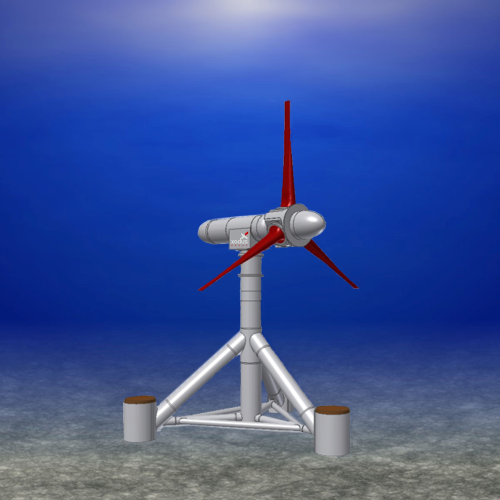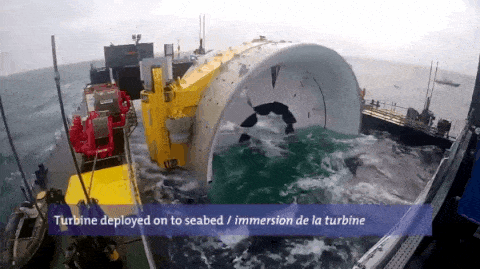
However, the power available for tidal power generation in a given area can be greater than a wind turbine due to the higher density of water. In December 2011 ANDRITZ Hydro Hammerfest successfully deployed its 1 MW pre-commercial tidal turbine HS1000 at the European Marine Energy Centre (EMEC) in Orkney, Scotland, destined to validate the technology for commercial tidal stream array application’s and has exported more than 1GWh of electrical power to the national grid powering the equivalent of 250 households for a year.Tidal stream generators use the kinetic energy of moving water to turn a turbine-similar to the way a wind turbine uses wind to create electricity. to supply three 1.5 MW tidal current turbines for an array under construction in the Inner Sound of the Pentland Firth, Scotland. At the end of 2014, ANDRITZ Hydro Hammerfest received an order from the UK-based tidal development company MeyGen Ltd. This smaller prototype has demonstrated more than 17,000 hour’s production track record of which more than 9,500 hours of continuous operation.

The technology had already a five-year track record in Norwegian waters as the first ever tidal current turbine with permanent connection to a public grid in 2004. The ANDRITZ Hydro Hammerfest HS1000 pre-commercial tidal turbine has been successfully certified by DNV (Det Norske Veritas) in 2013. The Inner Sound of Pentland Firth is recognized as one of the most challenging and highly active sites of tidal flow with high wave frequency and requires careful engineering, manufacturing, and assembly to ensure that the technology deployed is able to operate and perform within its environs.

The order placed with ANDRITZ Hydro Hammerfest is the first commercial order worldwide to supply tidal current turbines and part of the first project phase in completion of the MeyGen tidal array, which is the largest development project worldwide for a tidal turbine array. to supply three 1.5 MW tidal current turbines for an array under contruction in the Inner Sound of the Pentland Firth, Scotland. Designed for water depths down to 100m the tidal turbines are deployed on the seabed and kept in position by gravity, pins or pilings depending on the seabed and tidal stream characteristics.Īt the end of 2014, ANDRITZ Hydro Hammerfest received an order from the UK-based tidal development company MeyGen Ltd. It is meant for among the most taxing marine currents, designed to handle flows up to and above 5m/s.

#Tidal turbine generator software
Automatic control software governing a sensor-driven monitoring system adjusts the leading edge to capture optimum output from a given tidal stream environment. Sea water has more than 800 times the density than air, so for the same rotor swept area, water moving at 2.5 m/s (5 knots) exerts about the same amount of force as a constant 350 km/h wind.īuilding on the successful prototype experiences, ANDRITZ Hydro Hammerfest’s current turbine technology is a tried-and-tested design with horizontal axis rotor, equipped with a specially designed variable-speed pitching mechanism and a nacelle yawing system allowing optimal harnessing of the tidal currents in both flood and ebb directions. While ocean currents move slowly relative to typical wind speeds, they carry a great deal of energy. Tidal current electricity is clean, renewable, reliable and predictable.


 0 kommentar(er)
0 kommentar(er)
